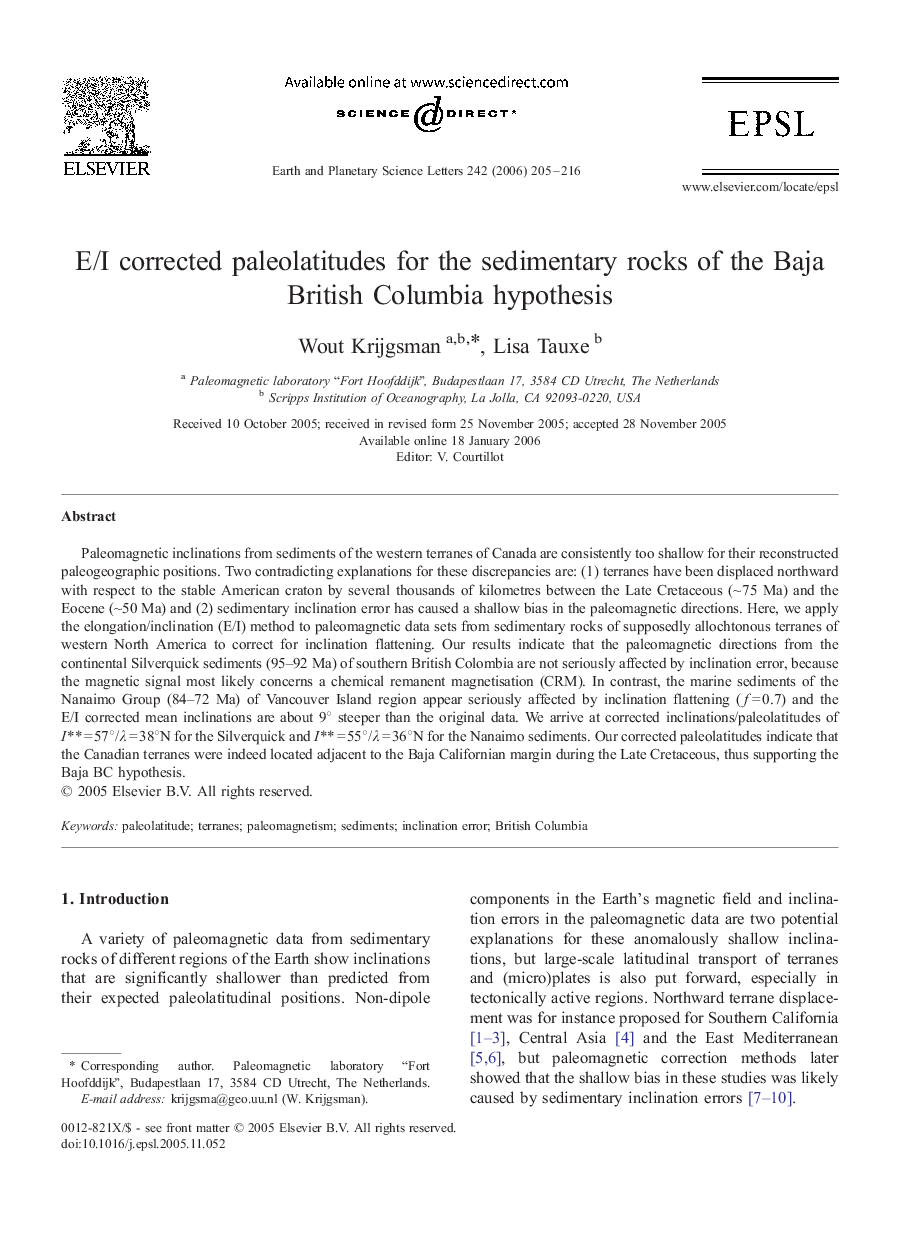| Article ID | Journal | Published Year | Pages | File Type |
|---|---|---|---|---|
| 4681148 | Earth and Planetary Science Letters | 2006 | 12 Pages |
Paleomagnetic inclinations from sediments of the western terranes of Canada are consistently too shallow for their reconstructed paleogeographic positions. Two contradicting explanations for these discrepancies are: (1) terranes have been displaced northward with respect to the stable American craton by several thousands of kilometres between the Late Cretaceous (∼ 75 Ma) and the Eocene (∼50 Ma) and (2) sedimentary inclination error has caused a shallow bias in the paleomagnetic directions. Here, we apply the elongation/inclination (E/I) method to paleomagnetic data sets from sedimentary rocks of supposedly allochtonous terranes of western North America to correct for inclination flattening. Our results indicate that the paleomagnetic directions from the continental Silverquick sediments (95–92 Ma) of southern British Colombia are not seriously affected by inclination error, because the magnetic signal most likely concerns a chemical remanent magnetisation (CRM). In contrast, the marine sediments of the Nanaimo Group (84–72 Ma) of Vancouver Island region appear seriously affected by inclination flattening (f = 0.7) and the E/I corrected mean inclinations are about 9° steeper than the original data. We arrive at corrected inclinations/paleolatitudes of I** = 57°/λ = 38°N for the Silverquick and I** = 55°/λ = 36°N for the Nanaimo sediments. Our corrected paleolatitudes indicate that the Canadian terranes were indeed located adjacent to the Baja Californian margin during the Late Cretaceous, thus supporting the Baja BC hypothesis.
